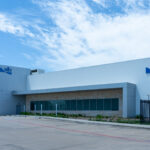SLB: says will exit seismic acquisition market; posts almost a billion-dollar write down for Venezuela
Schlumberger Limited (ticker: SLB) reported its results for fourth quarter and full-year 2017.
Highlights
- Fourth quarter revenue of $8.2 billion, increased 3% sequentially
- Fourth quarter pretax operating income of $1.2 billion, increased 9% sequentially
- Fourth quarter GAAP loss per share, including charges of $2.11 per share, was ($1.63)
- Full-year and fourth quarter cash flow from operations were $5.7 billion and $2.3 billion, respectively
- Full year 2017 revenue of $30.4 billion increased 9% year-on-year
Schlumberger Chairman and CEO Paal Kibsgaard discussed segment details in a statement
“We closed the year with fourth quarter revenue growing 3% sequentially while pretax operating income rose 9%. Sequential growth was driven by strong activity in North America, Saudi Arabia and Latin America, while revenue in the Europe, CIS and Africa Area seasonally declined. Earnings per share of $0.48, excluding charges, were 14% higher than the third quarter.
“Among the business segments, the fourth quarter revenue increase was led by the Production Group, which grew by 7%. Production Group performance was driven by strong international activity, with more than 20% sequential growth in Saudi Arabia, Russia and Argentina. In North America land, revenue grew 6% following the redeployment of additional pressure pumping fleets, despite a slight sequential decline in market activity.
“Cameron Group revenue increased 9% sequentially with growth across all product lines led by OneSubsea, on higher project volume and increased service revenue. Drilling Group revenue had more modest sequential growth of 3%, driven by strong M-I SWACO sales in Mexico and North America and increased Integrated Drilling Services activity in Kuwait. Reservoir Characterization Group revenue decreased 8% sequentially, as the seasonal decline in Wireline activity in Russia and lower revenue on a long-term project in the Middle East were partially offset by year-end sales of SIS software and WesternGeco multiclient seismic licenses.
“Pretax operating margin grew 73 basis points (bps) sequentially to 14.1% driven by improved profitability in the Production, Drilling and Reservoir Characterization Groups.
“Over the past three years of unprecedented market downturn, we have proactively sought to strengthen our technology offering and our market presence in key markets around the world, with the expansion of our hydraulic fracturing presence in North America land being the most recent example. In line with the challenging business environment over the same period, we have restructured all relevant parts of the company, in terms of size and organizational set-up, to maximize our market competitiveness and operational agility.
“Based on [our] in-depth analysis, the only product line that does not meet our return expectations going forward, even factoring in an eventual market recovery, is our seismic acquisition business. We have therefore taken the difficult decision to exit the marine and land seismic acquisition market and instead turn our WesternGeco product line into an asset-light business, built on our leading position within multiclient, data processing, and geophysical interpretation services.
3rd party E&P spend surveys predict 15-20% growth in North American investments, 5% increase in international spend in 2018: Kibsgaard
“Looking at the oil market, the strong growth in demand is projected to continue in 2018, on the back of a robust global economy. On the supply side, the extension of the OPEC- and Russia-led production cuts is already translating into higher-than-expected inventory draws. In North America, 2018 shale oil production is set for another year of strong growth, as the positive oil market sentiments will likely increase both investment appetite and availability of financing. At the same time, the production base in the rest of the world is showing fatigue after three years of unprecedented underinvestment. The underlying signs of weakness will likely become more evident in the coming year, as the production additions from investments made in the previous upcycle start to noticeably fall off. All together this means the oil market is now in balance and the previous oversupply discount is gradually being replaced by a market tightness premium, which makes us increasingly positive on the global outlook for our business,” Kibsgaard said in a statement.
“These positive oil market sentiments are reflected in the third-party E&P spend surveys, which predict 15–20% growth in North American investments in 2018, while the international market is expected to grow for the first time in four years, with a projected 5% increase in spend. So, as we enter the first year of growth in all parts of our global operations since 2014, there is renewed excitement and enthusiasm throughout our organization.”
Venezuela write-down
Given the recent economic and political developments in Venezuela, Schlumberger determined that it was appropriate to write-down its investment in the country. As a result, Schlumberger recorded a charge of $938 million during the fourth quarter of 2017.
2018 CapEx
SLB projects capex guidance for the full year 2018 (excluding multiclient and SPM investments) at approximately $2 billion, which is similar to the levels of 2017 and 2016.
US tax reform
US tax reform significantly changes US corporate income tax laws by, among other things, reducing the US corporate income tax rate to 21% starting in 2018 and creating a territorial tax system with a one-time mandatory tax on previously deferred foreign earnings of US subsidiaries. As a result, Schlumberger recorded a net charge of $76 million during the fourth quarter of 2017.
This amount, which is included in tax expense (benefit) in the consolidated statement of income (loss), consists of two components: (i) a $410 million charge relating to the one-time mandatory tax on previously deferred earnings of certain non-US subsidiaries that are owned either wholly or partially by a US subsidiary of Schlumberger and (ii) a $334 million credit resulting from the remeasurement of Schlumberger’s net deferred tax liabilities in the US based on the new lower corporate income tax rate.
After considering the impact of foreign tax credits and tax losses, the cash tax payable as a result of the one-time mandatory tax on previously deferred foreign earnings of Schlumberger’s US subsidiary will not be significant.
SLB said, “As a non-US company, Schlumberger’s corporate structure results in us largely paying taxes where we operate and earn profits, without having to incur additional layers of taxes. Given this structure, the primary impact of US tax reform on Schlumberger is that a lower federal tax rate will be applied to income earned by our US business. Absent the impact of US tax reform, our ETR would likely increase by approximately 2 to 3 percentage points in 2018 as compared to our fourth quarter 2017 ETR. However, the impact of US tax reform for 2018 is expected to largely offset this increase. As a result, we expect the full-year 2018 ETR to approximate our Q4 2017 ETR before charges and credits.
Other events
During the quarter, Schlumberger repurchased 1.6 million shares of its common stock at an average price of $64.82 per share for a total purchase price of $101 million.
In December 2017, Schlumberger announced plans to develop a state-of-the-art industrial manufacturing center at the King Salman Energy Park in the Kingdom of Saudi Arabia. The 500,000-m2 center will manufacture products for drilling, exploration, production and midstream operations. The first phase is expected to be completed in the second quarter of 2018.
On December 29, 2017, Schlumberger purchased the US hydraulic fracturing and pumpdown perforating businesses from Weatherford for $430 million. Schlumberger took ownership of Weatherford’s US-based facilities, field assets and supplier and customer contracts related to these businesses. This transaction will expand the Schlumberger OneStimSM business.
On January 17, 2018, the company’s board of directors approved a quarterly cash dividend of $0.50 per share of outstanding common stock, payable on April 13, 2018 to stockholders of record on February 7, 2018.
Full-year results
| (Stated in millions, except per share amounts) | |||||||
| Twelve Months Ended | Change | ||||||
| Dec. 31, 2017 | Dec. 31, 2016 | Year-on-year | |||||
| Revenue | $30,440 | $27,810 | 9% | ||||
| Pretax operating income | $3,921 | $3,273 | 20% | ||||
| Pretax operating margin | 12.9% | 11.8% | 111 bps | ||||
| Net loss (GAAP basis) | $(1,505) | $(1,687) | n/m | ||||
| Net income, excluding charges and credits* | $2,085 | $1,550 | 35% | ||||
| Diluted EPS (loss per share) (GAAP basis) | $(1.08) | $(1.24) | n/m | ||||
| Diluted EPS, excluding charges and credits* | $1.50 | $1.14 | 32% | ||||
| *These are non-GAAP financial measures. See section below entitled “Charges & Credits” for details. | |||||||
| n/m = not meaningful | |||||||
Q4 results
| (Stated in millions, except per share amounts) | |||||||||||
| Three Months Ended | Change | ||||||||||
| Dec. 31, 2017 | Sept. 30, 2017 | Dec. 31, 2016 | Sequential | Year-on-year | |||||||
| Revenue | $8,179 | $7,905 | $7,107 | 3% | 15% | ||||||
| Pretax operating income | $1,155 | $1,059 | $810 | 9% | 43% | ||||||
| Pretax operating margin | 14.1% | 13.4% | 11.4% | 73 bps | 272 bps | ||||||
| Net income (loss) – GAAP basis | $(2,255) | $545 | $(204) | n/m | n/m | ||||||
| Net income, excluding charges & credits* | $668 | $581 | $379 | 15% | 76% | ||||||
| Diluted EPS (loss per share) – GAAP basis | $(1.63) | $0.39 | $(0.15) | n/m | n/m | ||||||
| Diluted EPS, excluding charges & credits* | $0.48 | $0.42 | $0.27 | 14% | 78% | ||||||
| *These are non-GAAP financial measures. See section below entitled “Charges & Credits” for details. | |||||||||||
| n/m = not meaningful | |||||||||||
Consolidated revenue by area
| (Stated in millions) | |||||||||||
| Three Months Ended | Change | ||||||||||
| Dec. 31, 2017 | Sept. 30, 2017 | Dec. 31, 2016 | Sequential | Year-on-year | |||||||
| North America | 2,811 | $2,602 | $1,765 | 8% | 59% | ||||||
| Latin America | 1,034 | 952 | 952 | 9% | 9% | ||||||
| Europe/CIS/Africa | 1,808 | 1,838 | 1,834 | -2% | -1% | ||||||
| Middle East & Asia | 2,396 | 2,357 | 2,494 | 2% | -4% | ||||||
| Other | 130 | 157 | 62 | n/m | n/m | ||||||
| $8,179 | $7,905 | $7,107 | 3% | 15% | |||||||
| North America revenue | $2,811 | $2,602 | $1,765 | 8% | 59% | ||||||
| International revenue | $5,237 | $5,147 | $5,280 | 2% | -1% | ||||||
| n/m = not meaningful | |||||||||||
Conference call Q&A
Q: How should we think about the rollout of international revenue, or the contracts coming in and starting up as we go through 2018 and 2019 – and where do we see the inflection higher for international?
Chairman and CEO Paal Kibsgaard: Well, I think if you look at the progression of 2019, I think I’ll limit my comments to that. Like I said, the first quarter will be – we will see a lot of the start-up of these new contract wins. So in terms of revenue, we will have an impact of seasonality given the relative higher share of Northern Hemisphere business at this stage. And then it will be start-up cost and mobilizations that we’re going to focus on in the coming quarters.
So in terms of revenue progression, I think you will see the first quarter of significant acceleration in revenue in the second quarter followed again by a very strong growth also into the third quarter. So the year will have a somewhat slow start with seasonality, with start-up costs and mobilizations in the first and then followed by strong growth in the subsequent quarters.
Q (continued): And then with respect to the first quarter, normally, there’s about a 10% decline or so for Schlumberger’s earnings, yet that’s in a normalized year where you have a lot of back-and-forth quarter sales and so you see the drop-off there.
Should we think about something in that range or will it be maybe more of a pronounced decline at 1Q and then more of a jump in 2Q because of the staging and the preparation?
Kibsgaard (continued): Yeah, I think from an overall activity standpoint, I mean, we – I think about a 10% reduction in EPS is a good benchmark for that. On top of that, we will have, I would say, two, three additional cents of one-time costs linked to the reactivation as well as repositioning of equipment. But I think the 10% number is a good guide for the traditional seasonality with a couple of extra cents on additional costs.
Q: What OneStim product lines are you missing and what’s the timeframe do you think you could see for that business to be built out to the way that you would like it to be a well-rounded, full-product suite?
Kibsgaard: Yes. So for the multi-stage completion business for U.S. land, we do have a more or less complete offering. There are a few small pieces that were missing that we have, we’re working on organically. But in terms of overall, we have the products that we need in the market. We have a presence in the market, although it is not very high.
So what we are in full swing of doing now is to step up both supply chain and manufacturing as well as sales of this offering and you will now tie this very closely to the deployment of additional horsepower, which we obviously have ramped up significantly already in 2017.
So we have a very aggressive growth plan for the multi-stage completion offering that we already have in-house and we will look to penetrate significantly into the OneStim frac fleet that we already have in operation as well as the additional fleets that we will put into play in 2018.
Q: We’ve started to receive a few questions from investors regarding what is Schlumberger’s main growth strategy from here, what are the main initiatives to execute on that growth strategy?
I think it would be useful if you just, for a minute or two, from a high level, if you could briefly discuss the overarching strategy of the company going forward and the key initiatives to execute on that strategy?
Kibsgaard: Well, I would say that if you look at what we’ve done over the past three years in the down cycle, we have through acquisitions, in particular, Cameron, and through the combined, I would say, a number of small acquisitions within land drilling and organic investments, we have increased our addressable market with around 50%.
So we have now a very complete portfolio within Reservoir Characterization, within all aspects of Drilling, within all aspects of Production, with an increased presence in U.S. land as well and we’ve added Cameron to the lineup in 2016.
So our strategy going forward is very clearly that we want to now increase our market share, increase our participation in all aspects of the global business. We have a fantastic presence in the international market, which are now just returning to growth.
So our strategy is very clear, it hasn’t changed. We will continue to participate in all the major markets around the world and we are very excited about the growth opportunities now that international is providing us and again, the earnings power we have in these markets.
Q: Could you speak to the expected cadence of deployment and reactivation of the Weatherford frac fleet over the 2018 timeframe and then moreover, if you could also speak to what you expect the total reactivation cost of the fleet to be as well and whether you expect all 20 of these fleets to be working by the culmination of the end of this year?
Kibsgaard: Yes. If you look at what we did in 2017, we basically reactivated around 1 million-horsepower or slightly north of 20 fleets in 2017 of our own capacity. We are now more or less fully deployed and we had challenges early on with the reactivation and getting everything out. There’s a lot of hiring, there’s a lot of new things to take on as you massively ramp up as we did. But at least we have gotten the hang of it.
So our plan is to do exactly the same in 2018. So we would be deploying the additional 1 million-horsepower over the course of 2018 and although it’s not going to be a completely straight line, I think fairly close to a straight line over the course of the year I think is a good assumption.
Q (continued): Do you want to reveal it in terms of what you expect the reactivation cost to be?
Kibsgaard (continued): Yes. So for the horsepower that we bought from Weatherford, we expect the total reactivation cost to be in the range of $100 million, which is factored into our CapEx guidance.







